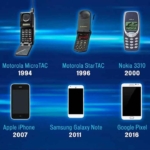Since the dawn of the Space Age, humankind has embarked on an incredible journey to uncover the mysteries of the universe. Key milestones in space exploration have not only expanded our knowledge but have also fostered international cooperation and technological innovation.
What Are the Major Milestones in Space Exploration?
The history of space exploration is marked by several remarkable events that have defined our approach to the cosmos. The following are some of the most pivotal milestones:
- 1957: Launch of Sputnik 1, the first artificial satellite.
- 1961: Yuri Gagarin becomes the first human to travel into space.
- 1969: Apollo 11 mission successfully lands the first astronauts on the Moon.
- 1986: Launch of the International Space Station (ISS), a symbol of global collaboration.
- 2020: NASA’s Perseverance rover lands on Mars to search for signs of ancient life.
Who Were the Pioneers of Space Exploration?
A list of key figures in the field of space exploration illustrates the vast human effort behind these remarkable achievements:
- Konstantin Tsiolkovsky: Theoretical pioneer of rocketry.
- Wernher von Braun: Leading engineer of the Apollo program.
- Valentina Tereshkova: First woman in space.
- Elon Musk: Founder of SpaceX, pushing for Mars colonization.
When Did Space Exploration Begin?
The formal beginning of space exploration can be traced back to October 4, 1957, when the Soviet Union launched Sputnik 1. This event marked the start of the Space Race between the Soviet Union and the United States, driving significant advancements in technology and research.
Where Have We Explored?
Space exploration has taken us to several celestial bodies and environments, including:
- Low Earth Orbit (LEO) – Home to the ISS and numerous satellites.
- The Moon – Site of six manned landings by Apollo missions.
- Mars – Explored by rovers such as Opportunity and Perseverance.
- Outer Planets – Studied through spacecraft like Voyager and Cassini.
Why Is Space Exploration Important?
Space exploration is vital for several reasons:
- Scientific Discovery: Advances our understanding of the universe.
- Technological Innovation: Leads to new technologies that impact our daily lives.
- Global Collaboration: Encourages partnerships among nations, fostering peace.
How Has Technology Evolved for Space Missions?
The technological advancements stemming from space exploration are astounding. The following comparison table illustrates some key innovations over the decades:
| Decade | Key Innovations |
|---|---|
| 1960s | First human spaceflight, Lunar Landing |
| 1970s | Space Shuttle Program, Voyager Probes |
| 1990s | Hubble Space Telescope, Mars Rovers |
| 2000s | International Space Station completion, Commercial Spaceflight |
| 2010s | Reusability of Rockets, Mars Exploration Missions |
Conclusion: The Journey Continues
The journey of space exploration is ongoing, with new missions planned to return to the Moon, travel to Mars, and explore beyond our solar system. Each milestone lays groundwork for future discoveries, and the pursuit of knowledge about our universe continues to inspire generations. As we look forward to new horizons, the significance of these key milestones in space exploration remains evident in both scientific and societal contexts.














